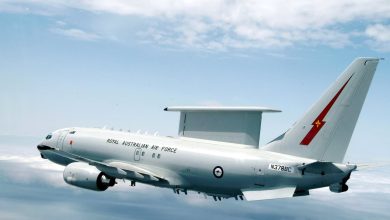Anduril touts Pulsar jammers that rapidly adapt to changing threats

Anduril Industries pulled back the curtain on its line of portable, rapidly reprogrammable electronic warfare tools that the U.S. military has been quietly using around the globe.
The defense tech company on May 6 made public its Pulsar products, which it said are capable of countering drones, geolocating forces and neutering improvised explosive devices. The equipment comes in variants for fixed use, mounting aboard ground vehicles, and integration on aircraft. A version that can be slung onto troops’ backs is also being eyed.
Electronic warfare represents a battle over the electromagnetic spectrum, which militaries rely on to communicate, discern friend from foe and guide munitions to targets. Pentagon investment in sophisticated EW atrophied in the years following the Cold War, but fighting in Eastern Europe and the Greater Middle East reignited interest.
“There’s a realization that the United States military is not where it needs to be, in terms of operating in this kind of high-EW threat environment, and then having the types of agile capabilities to defend our forces and fight back offensively,” Chris Brose, Anduril’s chief strategy officer, told reporters at a briefing.
“We’re not going to go talk about ideas that we have, share glossy renderings of what they might look like in the world, and then go seek to build them and deliver them years later,” he added. “We tend to do the opposite.”
RELATED
The Pulsar line has been in development since 2020 and was funded internally. It is software-defined, meaning updates can be dished out quickly and constraints imposed by hardware are lessened, and leans on advanced computing to retool for novel threats.
A war with Russia in Europe or China in the Indo-Pacific, for example, might introduce previously unseen technologies and electronic signatures. The time it takes to counter them could mean the difference between victory and defeat.
“Each system can process the data where it is, and then many systems that are networked together can learn from each other, just using small metadata,” said Sam El-Akkad, the general manager of radio frequency and EW systems at Anduril. “If one system sees something new, all the other systems are trained to see that new thing and recognize it in the future.”
While Anduril declined to specify where Pulsar has been used, deployment was described as happening across “multiple continents.”
The company in 2022 mentioned the EW equipment after winning a nearly $1 billion counter-unmanned aerial systems contract from U.S. Special Operations Command. A memo obtained by Defense News that same year described it helping to “mitigate incoming threats.”
“Pulsar is not just a figment of our imagination,” El-Akkad said. “At a high level, we’re in production of these systems, so we’re pumping them out and they are being used.”
Colin Demarest is a reporter at C4ISRNET, where he covers military networks, cyber and IT. Colin previously covered the Department of Energy and its National Nuclear Security Administration — namely Cold War cleanup and nuclear weapons development — for a daily newspaper in South Carolina. Colin is also an award-winning photographer.







